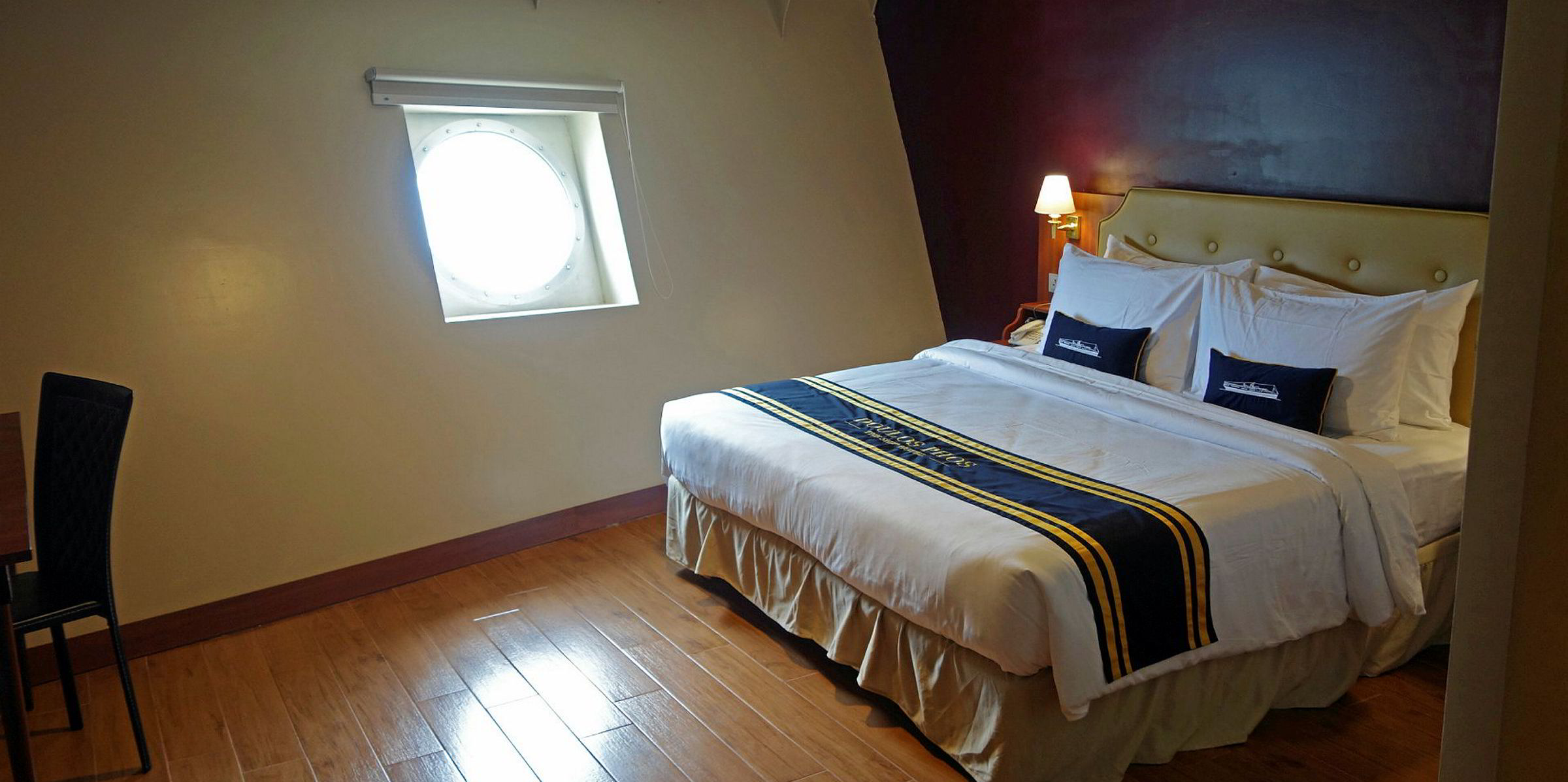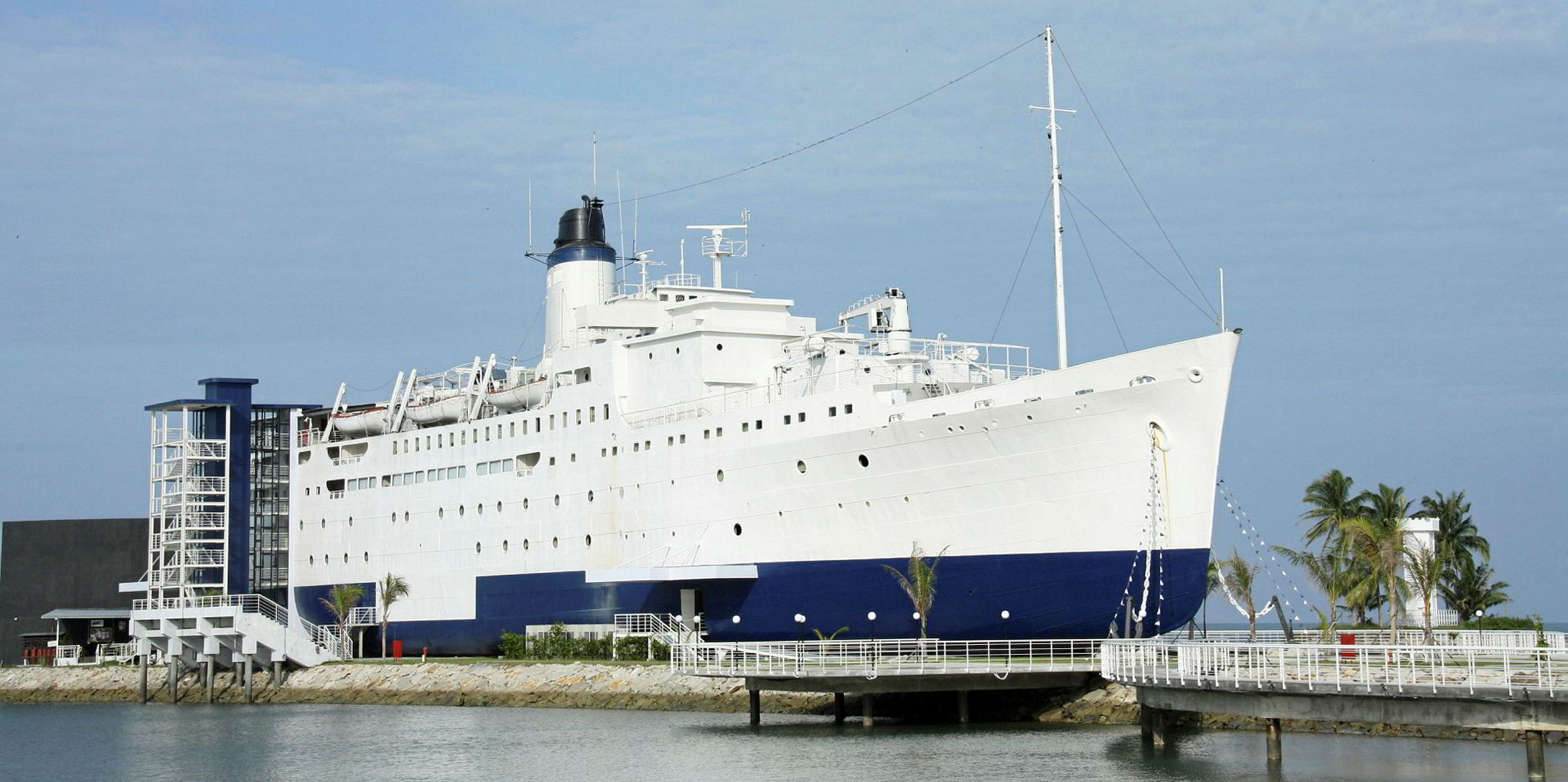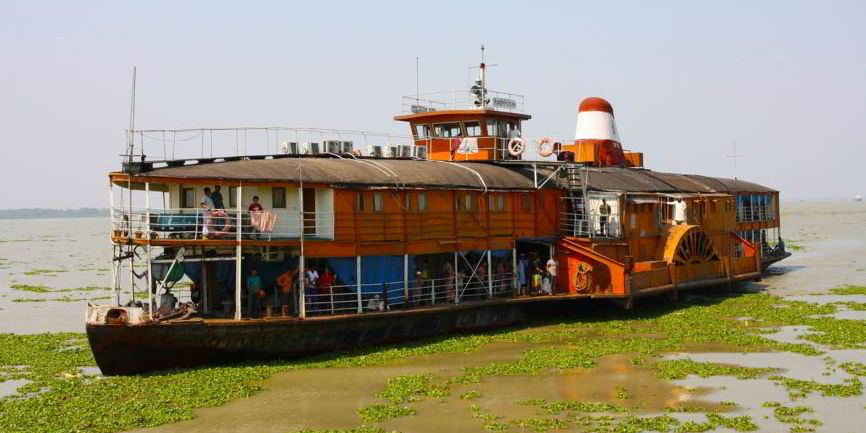Plinthed on an anchor-shaped promontory off the Indonesian island of Bintan, a 106-year-old general cargoship has opened its doors as a luxury hotel. It is the latest chapter in Doulos Phos’ long, extraordinary career.
The 6,900-gt vessel was built in 1914 in Newport News, Virginia, as the US-flagged Medina. The builders could hardly have imagined it would outlive perhaps even their grandchildren.
Plain and mundane, the Medina plodded along carrying cargo for more than three decades, surviving two world wars before being retired. A severe shortage of ships after World War II proved a life-saver, though, and a trading buyer pushed the vessel into the passengership domain as the austere Panamanian migrant carrier and pilgrim ship Roma.
Italy’s Costa Line was sufficiently impressed with the 38-year-old veteran to acquire it in 1952, even though many ships of its vintage had been sold off for scrap by then. The company propelled the renamed Franca C into the upper echelons of the maritime world by thoroughly rebuilding it into what was deemed then to be a deluxe cruiseship.
Time was called on this cruising career in 1977, and the ship, which had been re-engined several times, came on to the radar of German Christian charity Operation Mobilization, which beat the shipbreakers to it, renamed it Doulos and sent it to roam the world as a floating bookshop.
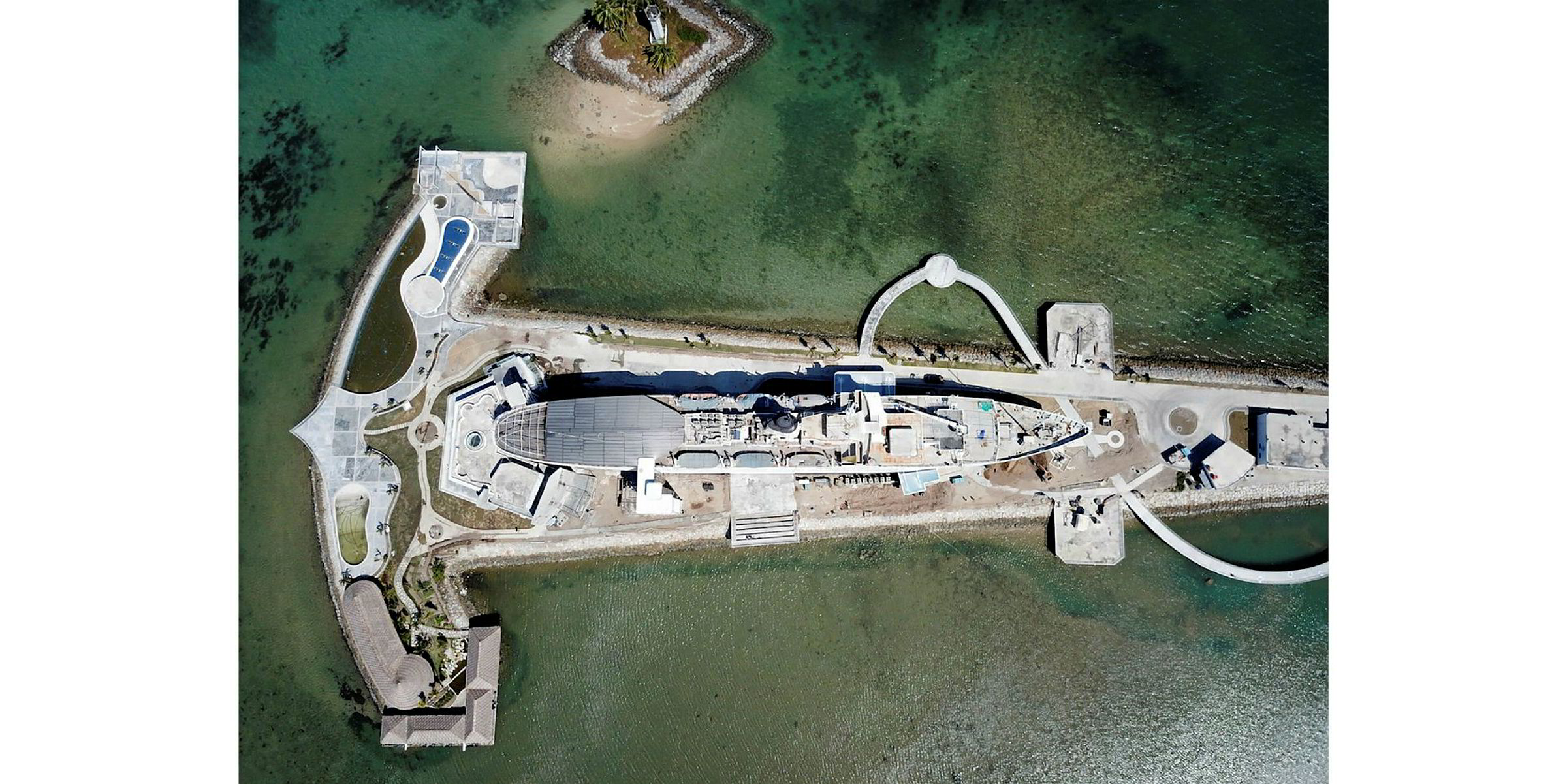
This fourth phase came to an abrupt end in November 2009, when corrosion problems deemed too expensive to repair were unearthed during a routine dry-docking. Ironically, the steelwork problems were in areas added by the Italians. The hull, built of US steel, was as strong as ever.
At that point, Eric Saw, a Singaporean businessman, stepped into the picture. Saw, whose only maritime experience was operating a replica Mississippi paddle steamer as a floating Tex-Mex restaurant in Singapore, admits he had no intention of buying the ship at first.
“I was aware of the Doulos, but I never expected I would become the owner. I was approached by a church group who thought that with my experience running a floating restaurant, I would be able to help them with their plan to preserve the ship as a floating attraction,” he says.

“They backed out, but I had by this time fallen in love with the old lady. I decided to buy her and turn her into a floating hotel and maritime museum.”
Buying the ship was the easy part. Bringing it to the point where it could receive paying guests proved far more challenging.
Saw’s first plan was to refurbish the ship as a floating hotel moored in Singapore. To his dismay, the local port and maritime authorities gave him the cold shoulder, claiming there was no docking space available.
So Saw scoured the city-state’s coastline for an empty spot where he could build a pier along which to moor it. He found several locations, but his requests were invariably met with an unrelenting “No”.
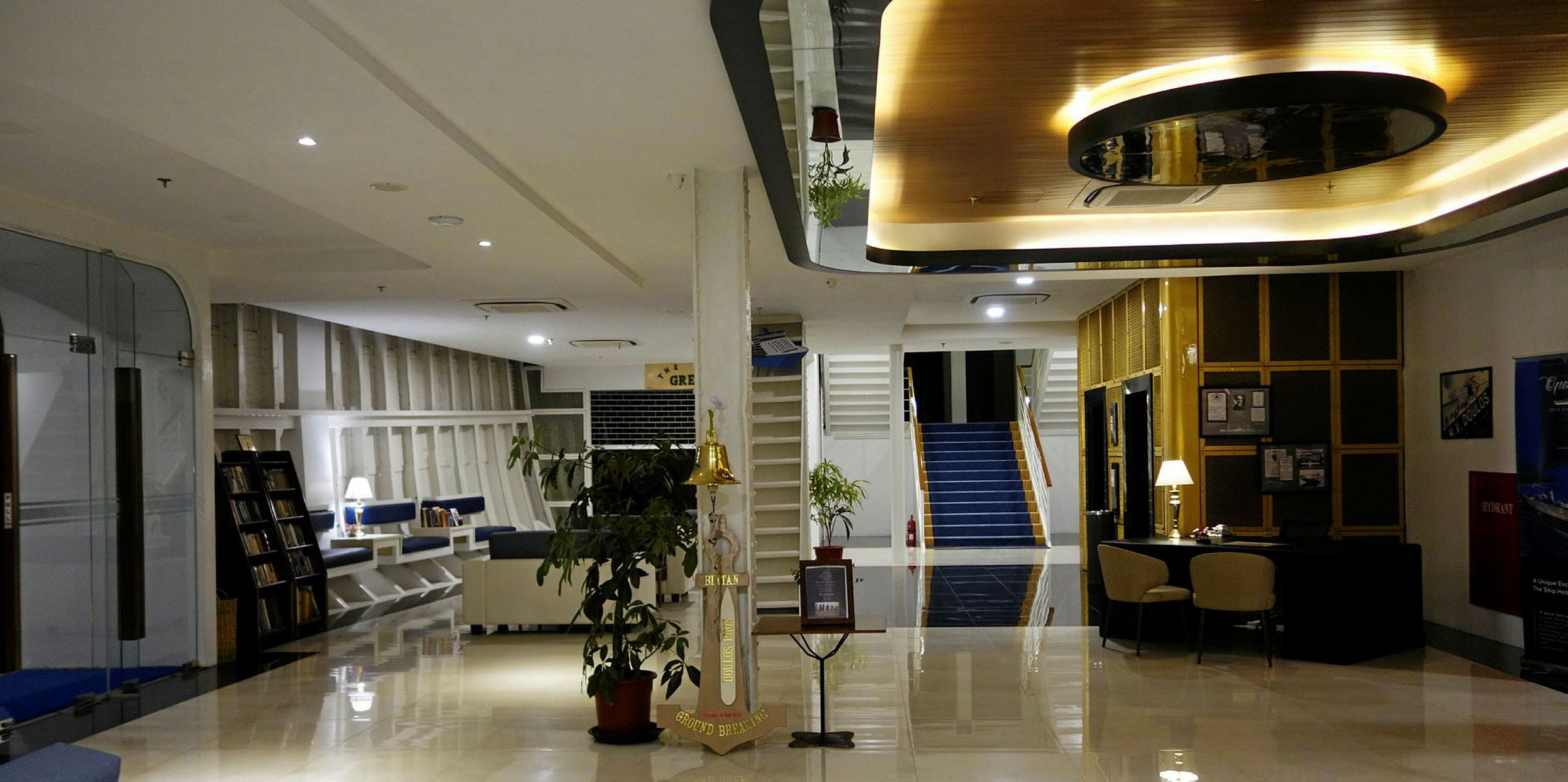
But hotelier Bintan Resorts International showed far more enthusiasm at having the historic ship as part of its collection of hotels on the resort island of Bintan, a popular tropical getaway about an hour by ferry from Singapore.
The Doulos Phos, as Saw had renamed the ship, would eventually be hauled up onto a purpose-built promontory of reclaimed land near the island’s ferry terminal in late 2015.
The nail-biting process, involving pulling the ship ashore on airbags, took seven weeks. With the vessel firmly embedded in a concrete base, work on turning it into a luxury hotel could begin in earnest.
By the time the Doulos Phos had been retired by Operation Mobilization, it was thoroughly worn out. What little was left from its days as a luxury cruiseship would not pass muster with today’s tourists.
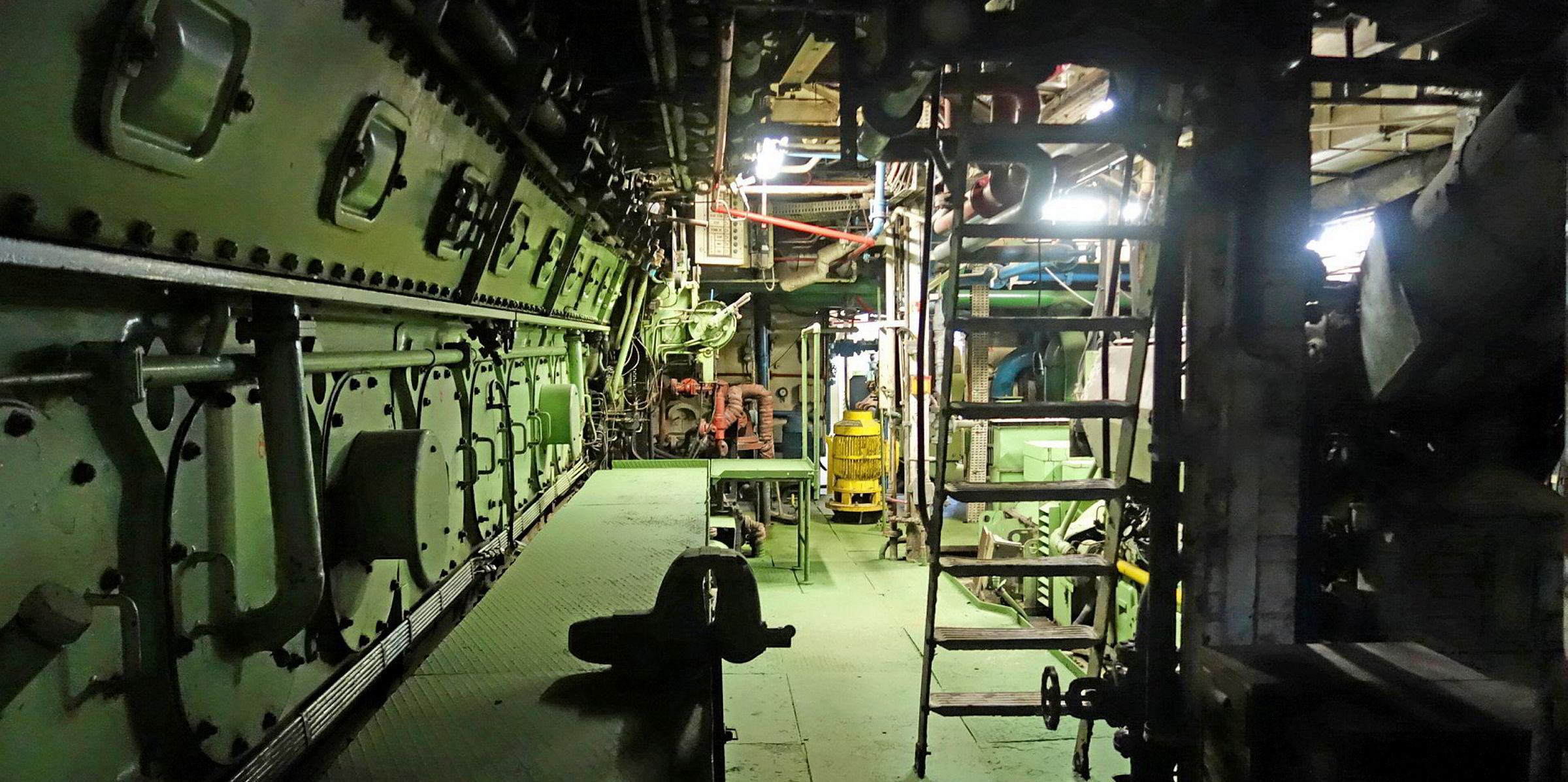
For the ship to function in its new role, it had to be gutted and rebuilt from the bare steel. The engine room and bridge were kept as part of a maritime heritage trail; everything else was stripped out.
About 100 new hotel rooms, which Saw still refers to as cabins, were built. They are far larger than what was available in the ship’s cruising days, and feature all the modern amenities and comforts found in land-based luxury hotels. The designers went to great pains to create a maritime feel throughout, without resorting to nautical kitsch.
There is a small cocktail lounge for suite guests, and a banquet/conference hall on what used to be the lido deck, and later its bookshop. Smaller seminar rooms located elsewhere make the venue ideal for meetings and events during the quieter weekdays.
With most of the ship given over to cabin accommodation, the dining, lounge and leisure facilities are concentrated in a building at the stern. It opens onto a vast deck area with an infinity pool, jacuzzi, open-air bar and access to the sea. A spa and gym are located in a building nearby.
Saw estimates he spent SGD 21m ($15.5m) on the 10-year project, all self-funded.
“It has taken every last cent that I have. There were many frustrations, many along the way who said I should give up, but I refused. Securing a long-term future for this ship has been my dream.”
